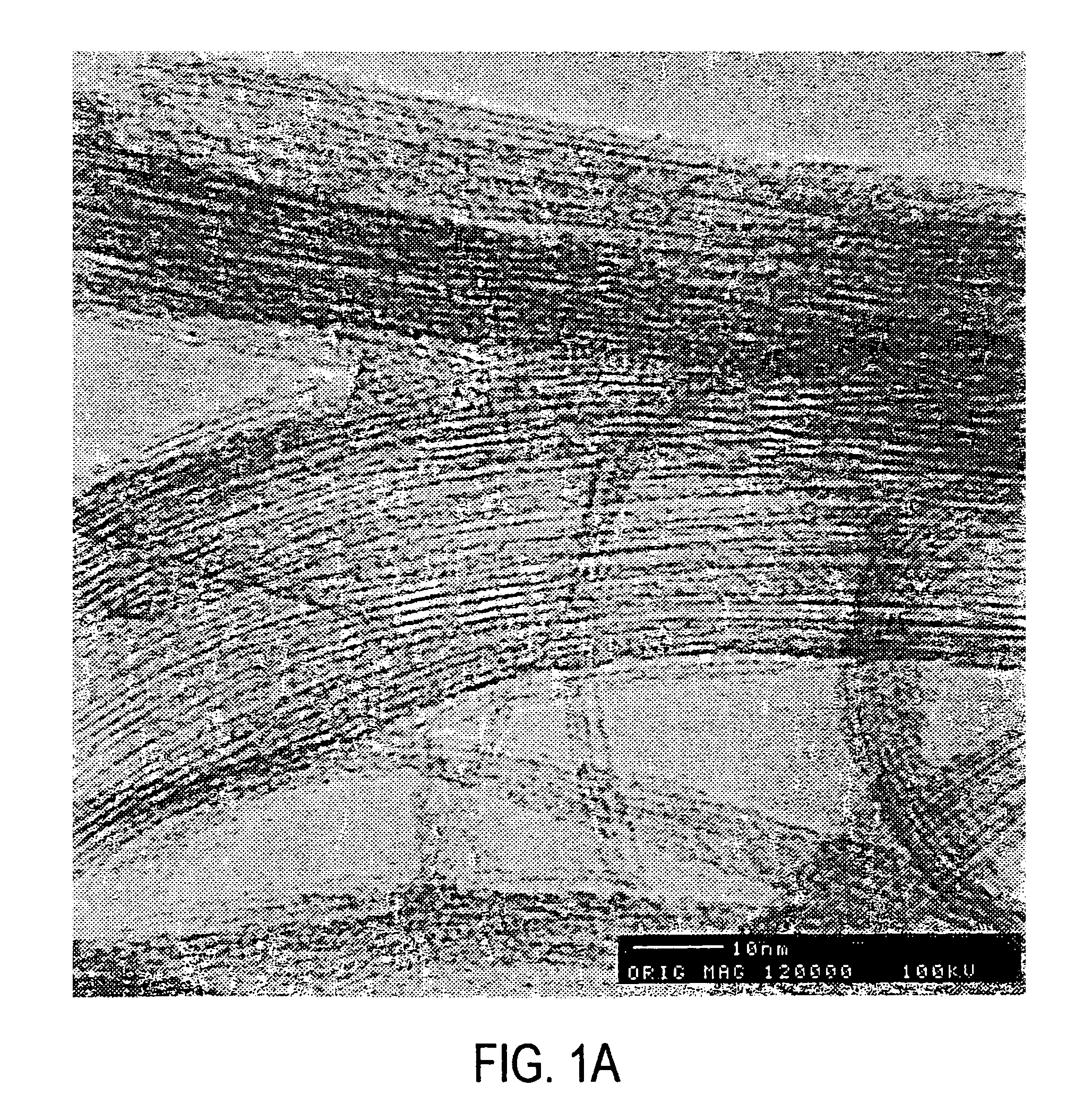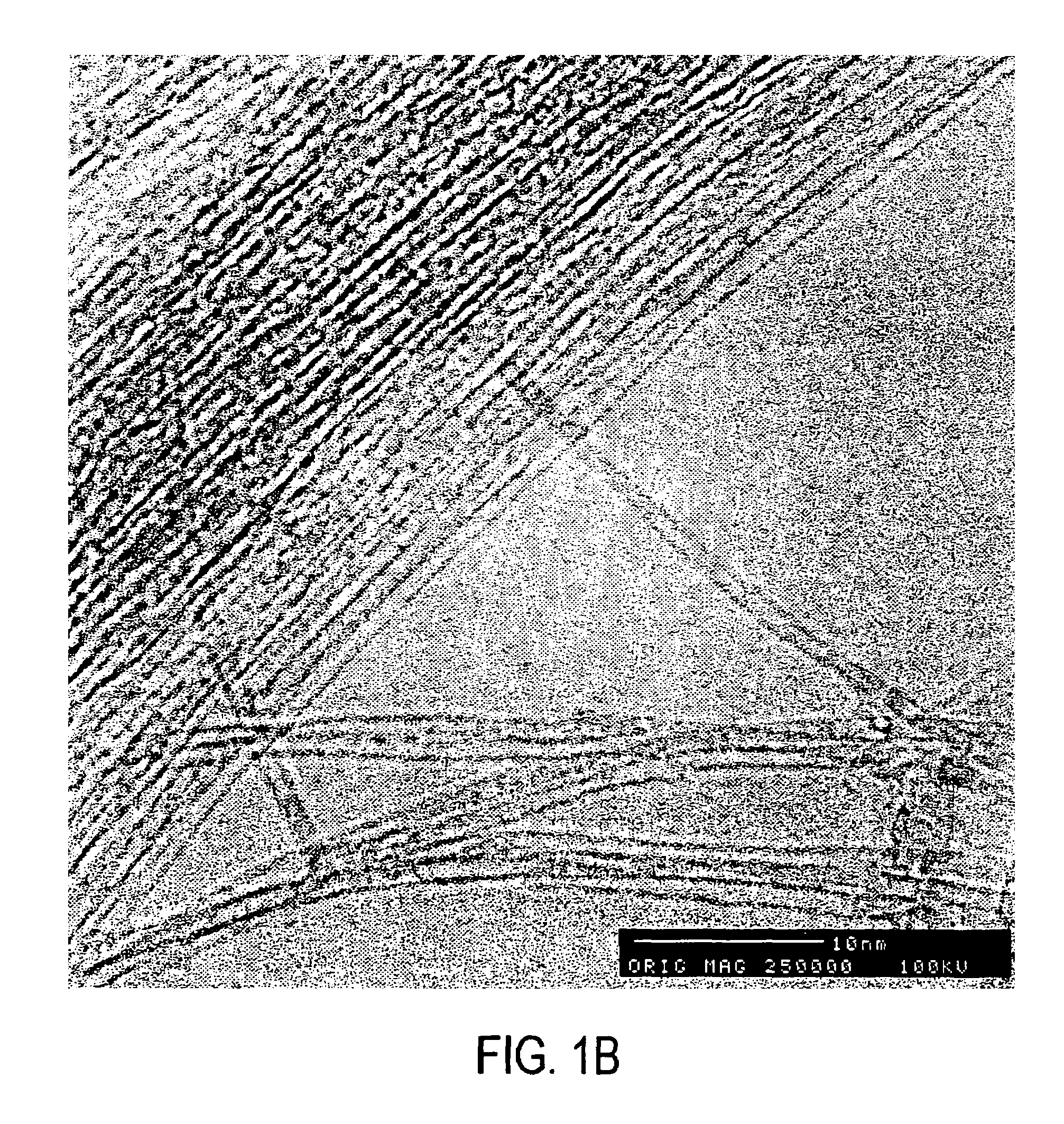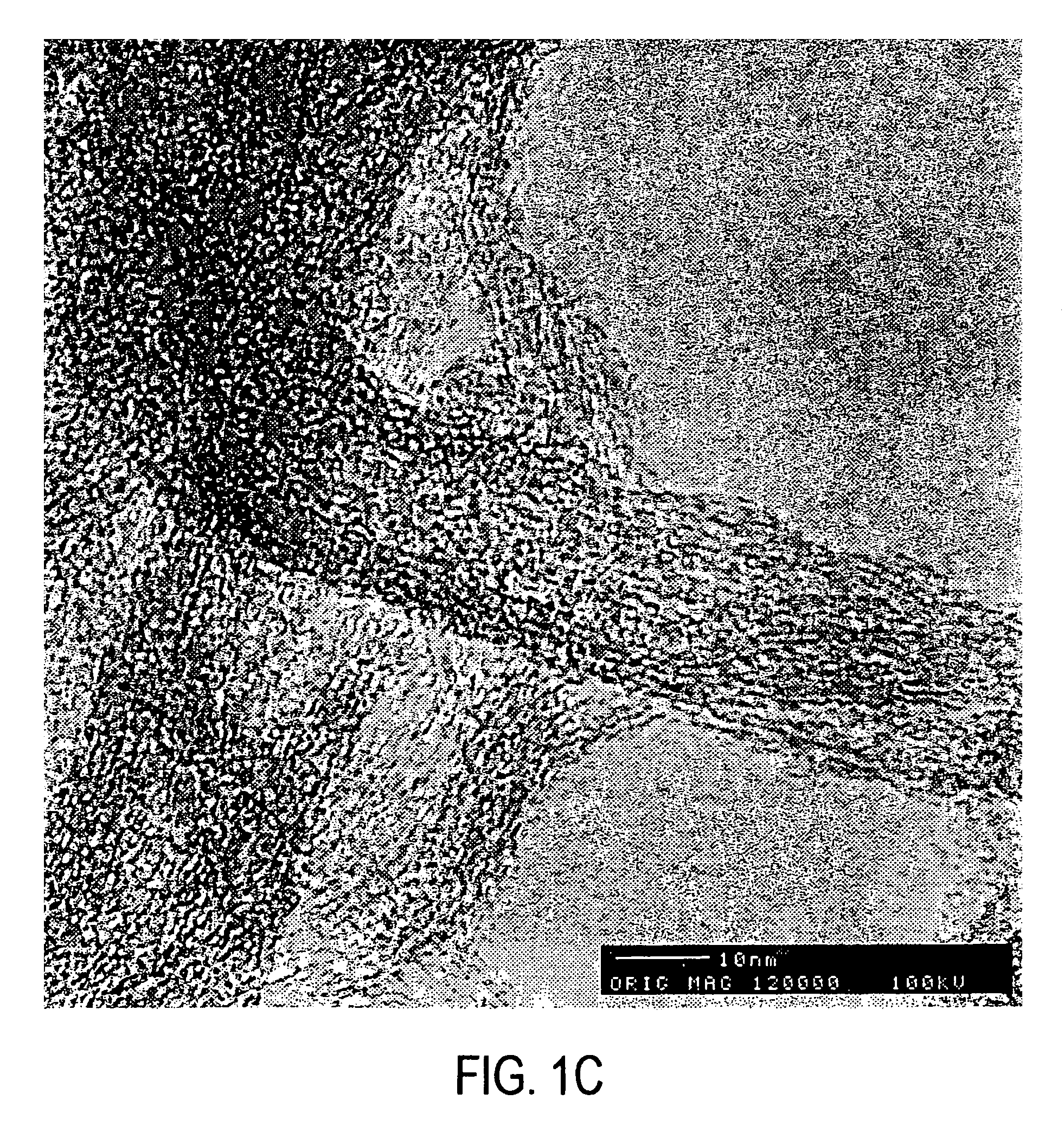Sidewall derivatized carbon nanotubes
a carbon nanotube and derivatization technology, applied in the field of derivatization carbon nanotubes, can solve the problems of difficult separation of individual carbon nanotubes from the other reaction products and purification, low nanotube yield, and significant variation in structure and size of tubes, etc., to achieve high electrical resistance
- Summary
- Abstract
- Description
- Claims
- Application Information
AI Technical Summary
Benefits of technology
Problems solved by technology
Method used
Image
Examples
example 1
1.1 Fluorination of Single-Wall Carbon Nanotubes
[0100]Single-walled carbon nanotubes were produced by the dual pulsed laser vaporization of Co / Ni doped graphite rods and purified by techniques described previously (Rinzler, et al., 1998). The purification product is a metastable colloidal suspension of SWNT “ropes” (bundles of hexagonally close packed tubes ranging from a few to 200 SWNT, See Thess, et al., 1996) in a 0.2% aqueous solution of Triton X-100 surfactant. Filtering the solution through a PTFE filter membrane and washing with methanol to remove residual surfactant leaves a black film on the surface. If this layer is sufficiently thick (10-75 μm) it can be peeled off to form a free standing film or “bucky paper” of SWNT. This form has appreciable mechanical integrity and is convenient for handling, and for electrical conductivity and Raman scattering measurements. It is the fluorination of this “bucky paper” that is described here.
[0101]In fluorinating the SWNT, elemental ...
example 2
2.1 Preparation of Fluorinated Single-Wall Carbon Nanotubes
[0112]SWNT were produced by the dual pulsed laser vaporization of Co / Ni doped graphite rods and purified as discussed previously (Rinzler, et al., 1998). The highly purified product consists of colloidally suspended bundles or “ropes” of SWNT (Liu, et al., 1998). Filtering this over a 0.2 micron PTFE filter membrane and rinsing with methanol yields a black film that can be peeled off to give a freestanding “bucky paper.” This paper was then oven baked for several hours at 150° C. to remove any residual solvent. The baked “bucky paper” was then loaded into a temperature controlled monel flow reactor where it was purged at 250° C. under a stream of He for ˜1 hour. A 10% F2 in He mixture was then passed over the sample after first being passed over NaF to remove any HF present. This yielded material with stoichiometries ranging from C3F to C2F (as determined by electron microprobe analysis) depending on reaction time (between 8...
example 3
3.1 Preparation of Highly Purified SWNTs
[0120]Single wall carbon nanotubes were produced by the dual pulsed laser vaporization of Co / Ni doped graphite rods and purified by methods discussed previously (Rinzler, et al., Appl. Phys. A, 1998, 67:9-37). The SWNTs produced in this way are primarily (10,10) nanotubes. The purified product is a metastable colloidal suspension of SWNT “ropes” (bundles of tubes ranging from a few to 200 SWNTs, see Thess, et al., Science 1996, 273, 483-487) in a 0.2% aqueous solution of Triton™ X-100 surfactant. This was then filtered over a PTTE filter membrane (Sartorius, with 0.2 μm pore dimensions) and rinsed with methanol. Filtering this and rinsing with methanol leads to a final product which is a freestanding “mat” or “bucky paper” of SWNTs that is approximately 10 μm thick. Purity of the SWNTs was monitored via scanning electron microscopy (JEOL 6320F SEM). FIG. 9 shows a sample of typical purity. This product was then resuspended by sonication in dim...
PUM
| Property | Measurement | Unit |
|---|---|---|
| temperature | aaaaa | aaaaa |
| temperature | aaaaa | aaaaa |
| length | aaaaa | aaaaa |
Abstract
Description
Claims
Application Information
 Login to View More
Login to View More - R&D
- Intellectual Property
- Life Sciences
- Materials
- Tech Scout
- Unparalleled Data Quality
- Higher Quality Content
- 60% Fewer Hallucinations
Browse by: Latest US Patents, China's latest patents, Technical Efficacy Thesaurus, Application Domain, Technology Topic, Popular Technical Reports.
© 2025 PatSnap. All rights reserved.Legal|Privacy policy|Modern Slavery Act Transparency Statement|Sitemap|About US| Contact US: help@patsnap.com



